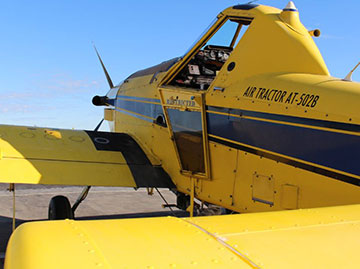The Australian Transport Safety Bureau says pilots continue to collide with known wires in aerial application, including agricultural spraying, spreading and firefighting.

The ATSB’s Aerial application safety 2015–2016 year in review found wirestrike was the most common cause of accident and serious incidents in aerial application between May 2015 and April 2016.
Wirestrikes (where an aircraft hits a wire such as a powerline) caused 11 accidents and serious incidents in the 12-month period. Other types of accidents and serious incidents were engine failure or malfunction (6), collision with terrain (3), controlled flight into terrain (2) and runway excursion (2).
Most wirestrikes involve wires that the pilot was already aware of. Often, they involve wires which the pilot has flown several times before that day.
With their flying operations very close to the ground, aerial application pilots are well aware of the dangers of wires. The ATSB says pilots need to know the location of wires in the area to be sprayed through maps, talking with landowners and locals, and through aerial reconnaissance before operations commence.
Spraying patterns need to be organised with the wire locations in mind, and pilots need to maintain focus during their flying task, and use continuous reminders of the presence of wires. When plans change or the spray pattern differs such as for clean-up runs, pilots need to redo their aerial reconnaissance of wires.
Although there has been a slight growth in the number of accidents over the past three years, there were considerably fewer accidents each year in the past decade than in the previous 25 years.
Aerial agriculture has the second highest accident rate per million hours flown across the operation types, behind non-VH-registered recreational aeroplanes.
Aerial application operations are inherently risky, involving low-level flying, high workloads and obstacles such as power lines and uneven terrain.
Read the ATSB research report (AR-2016-022) Aerial application safety 2015-2016 year in review


